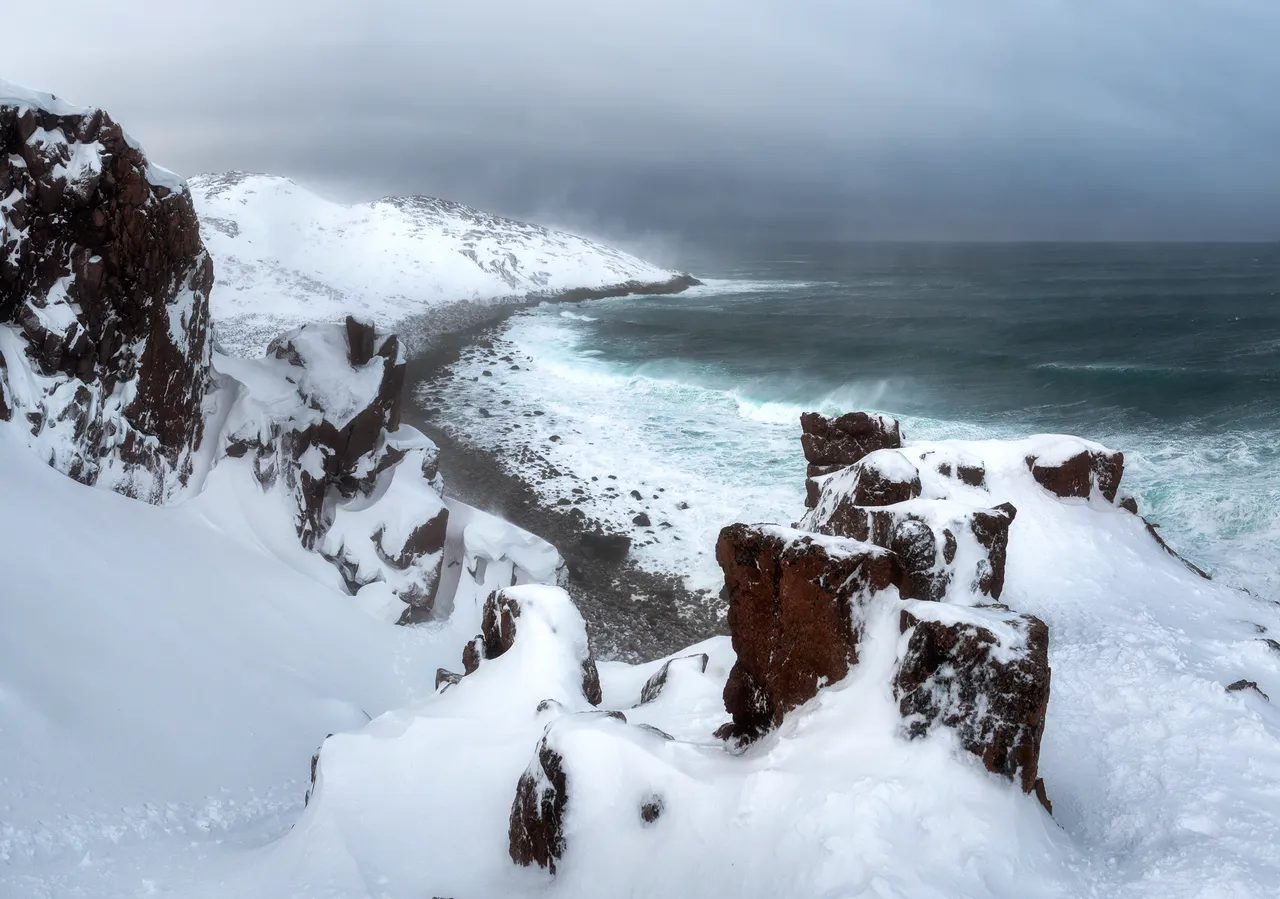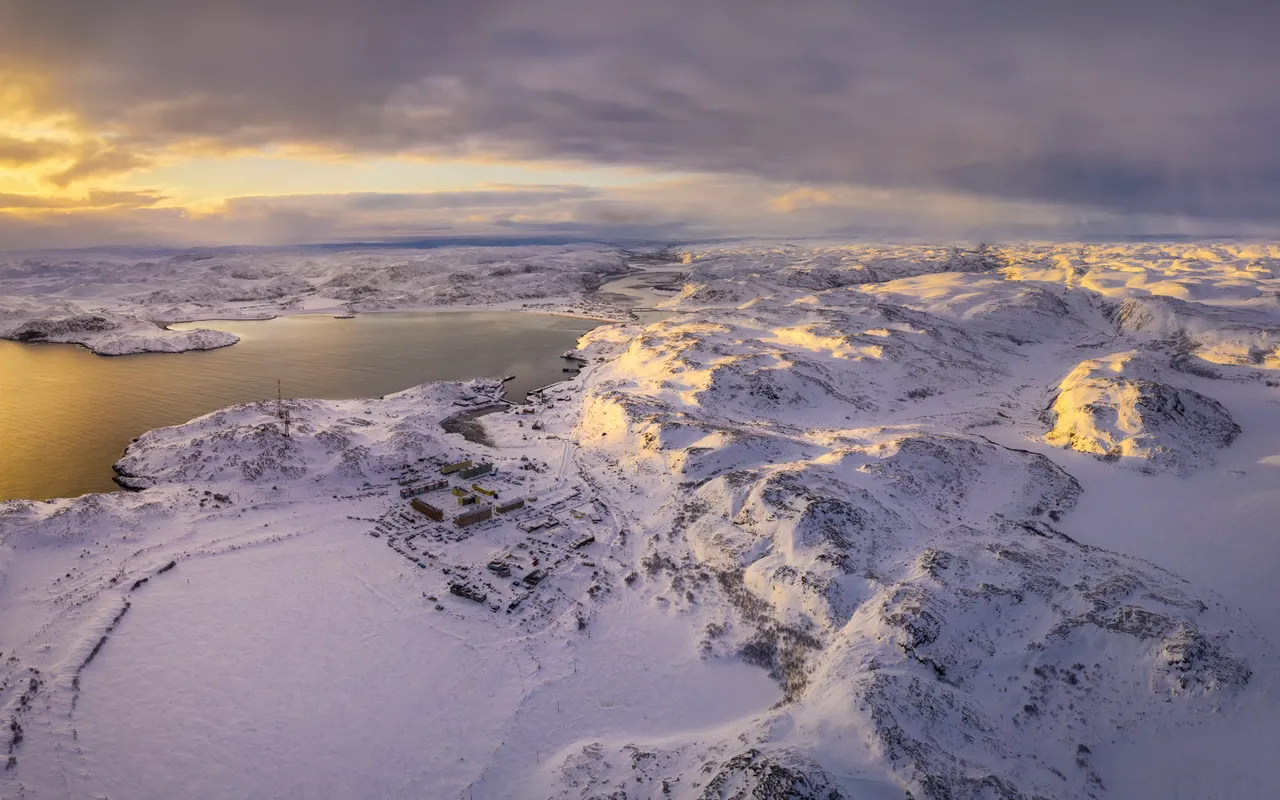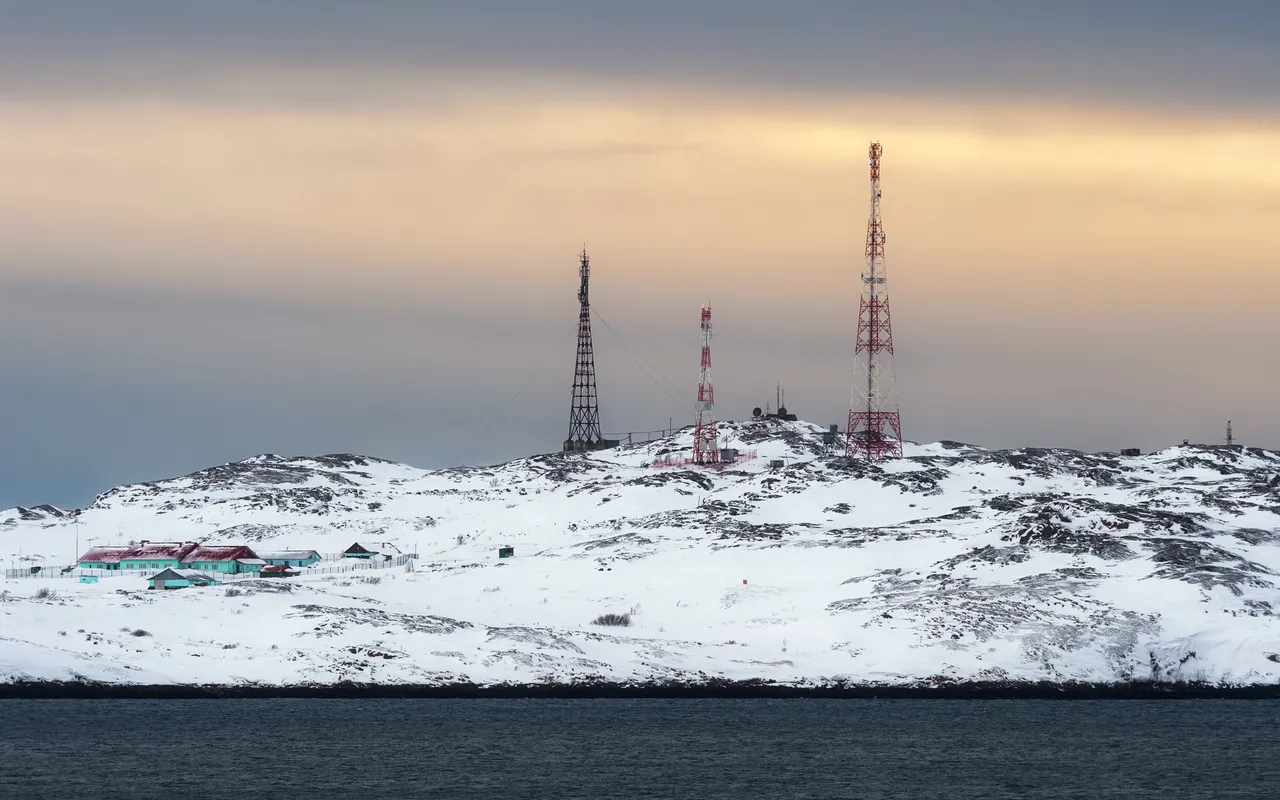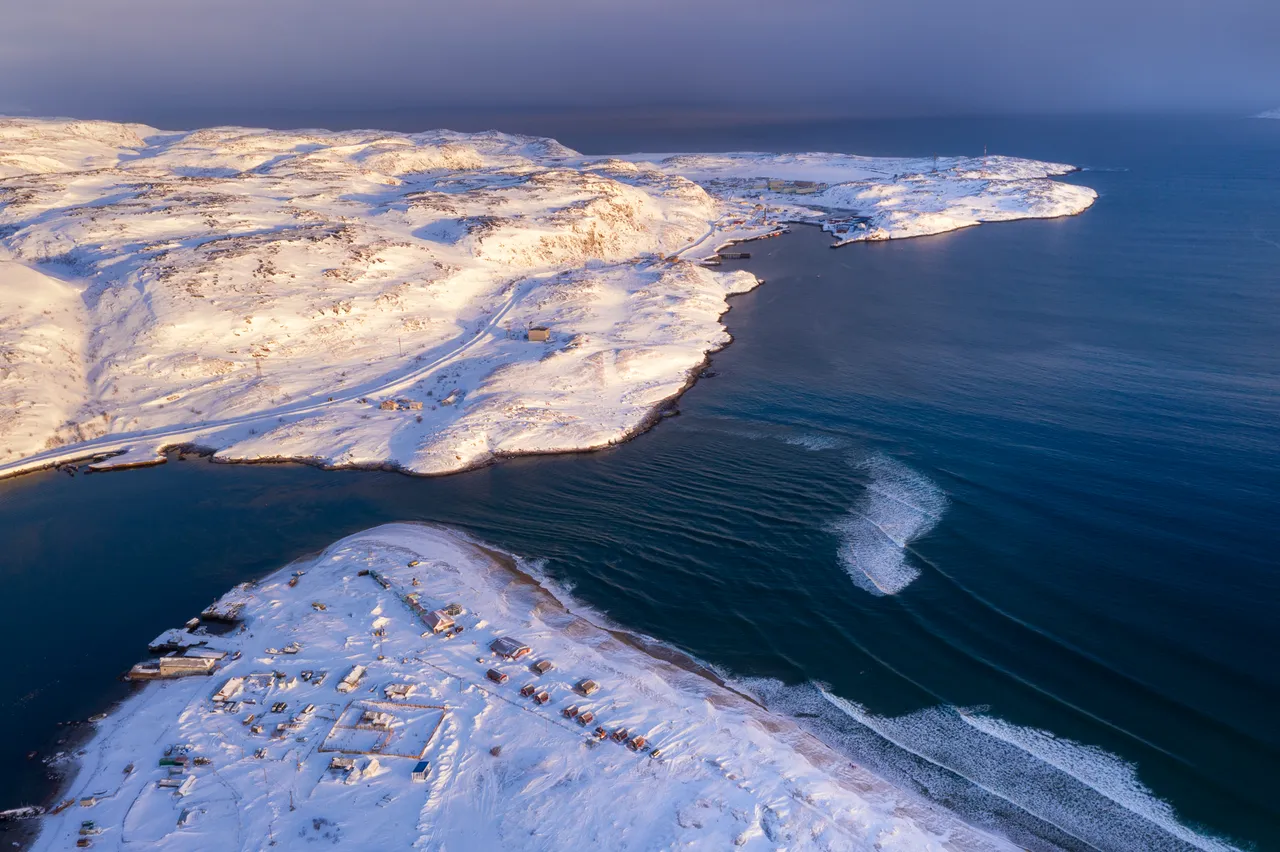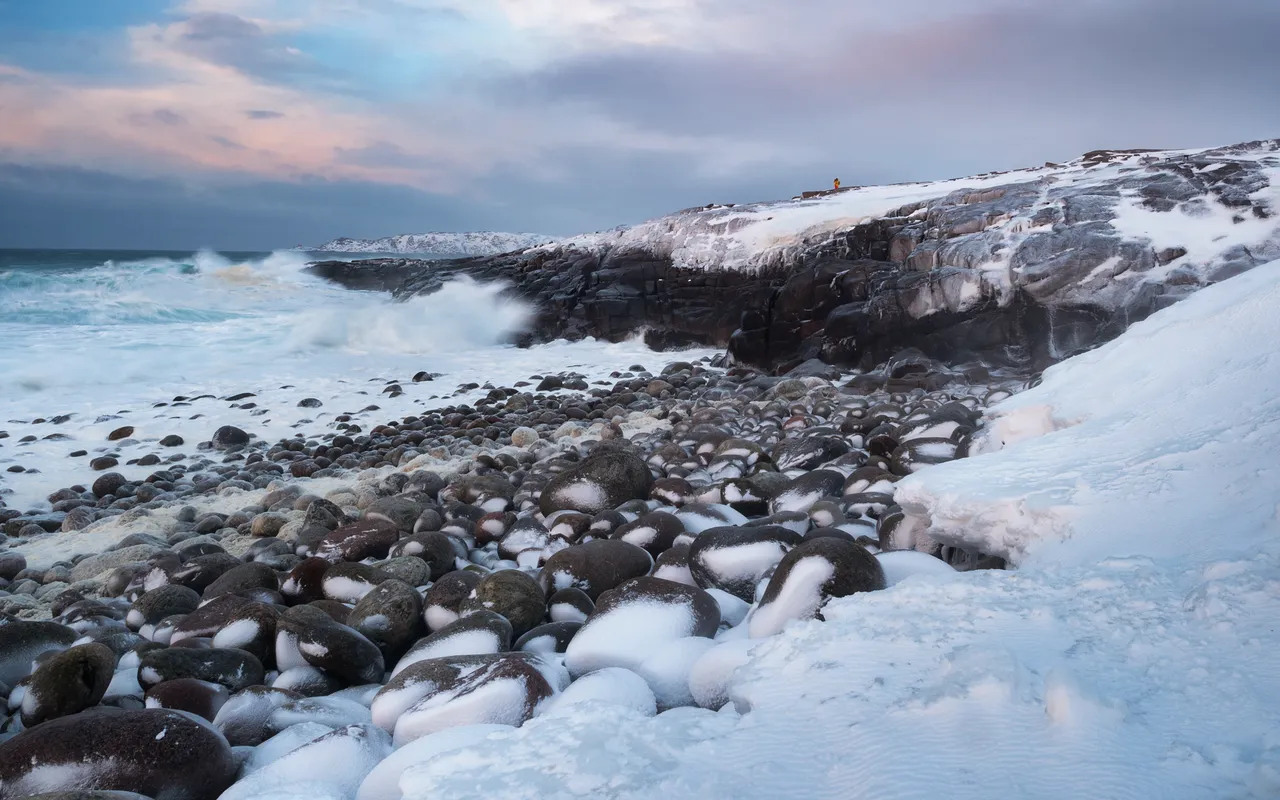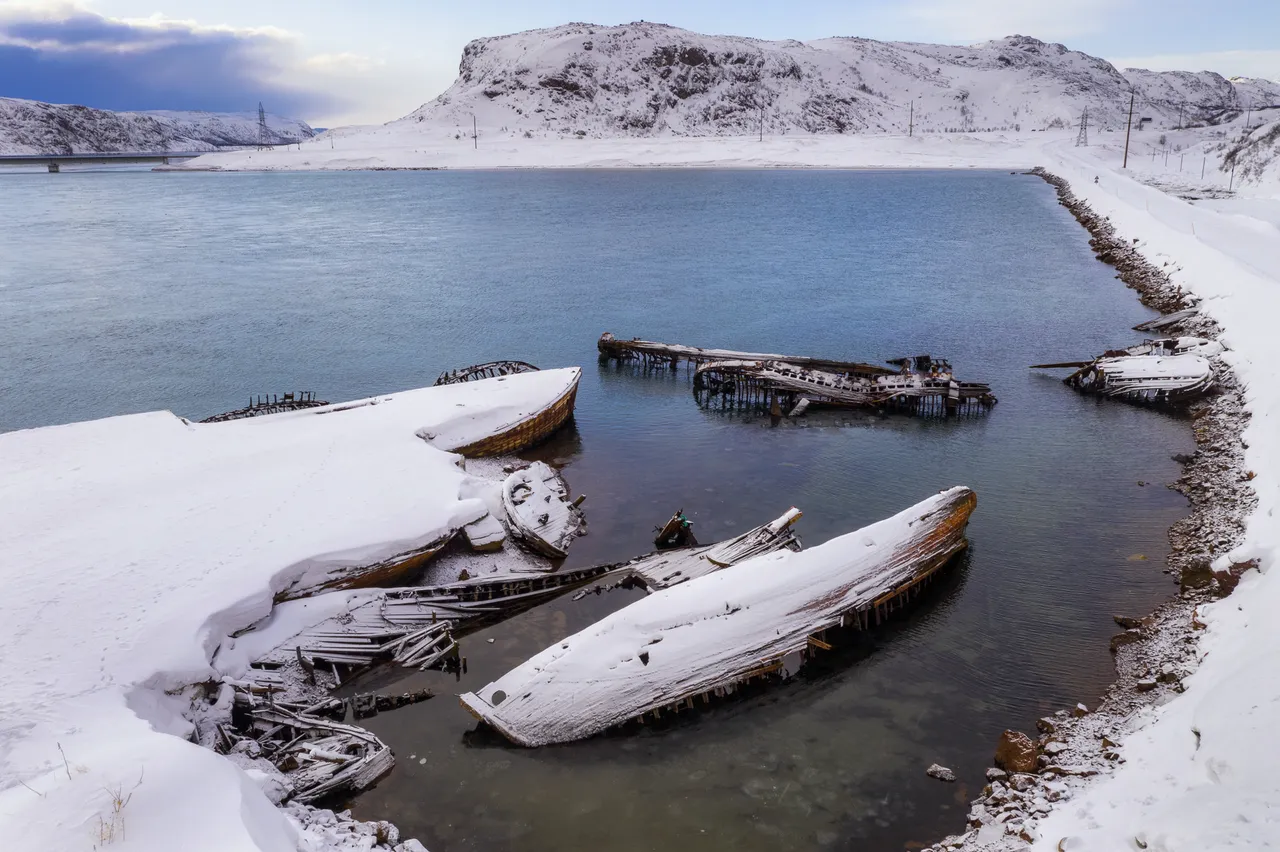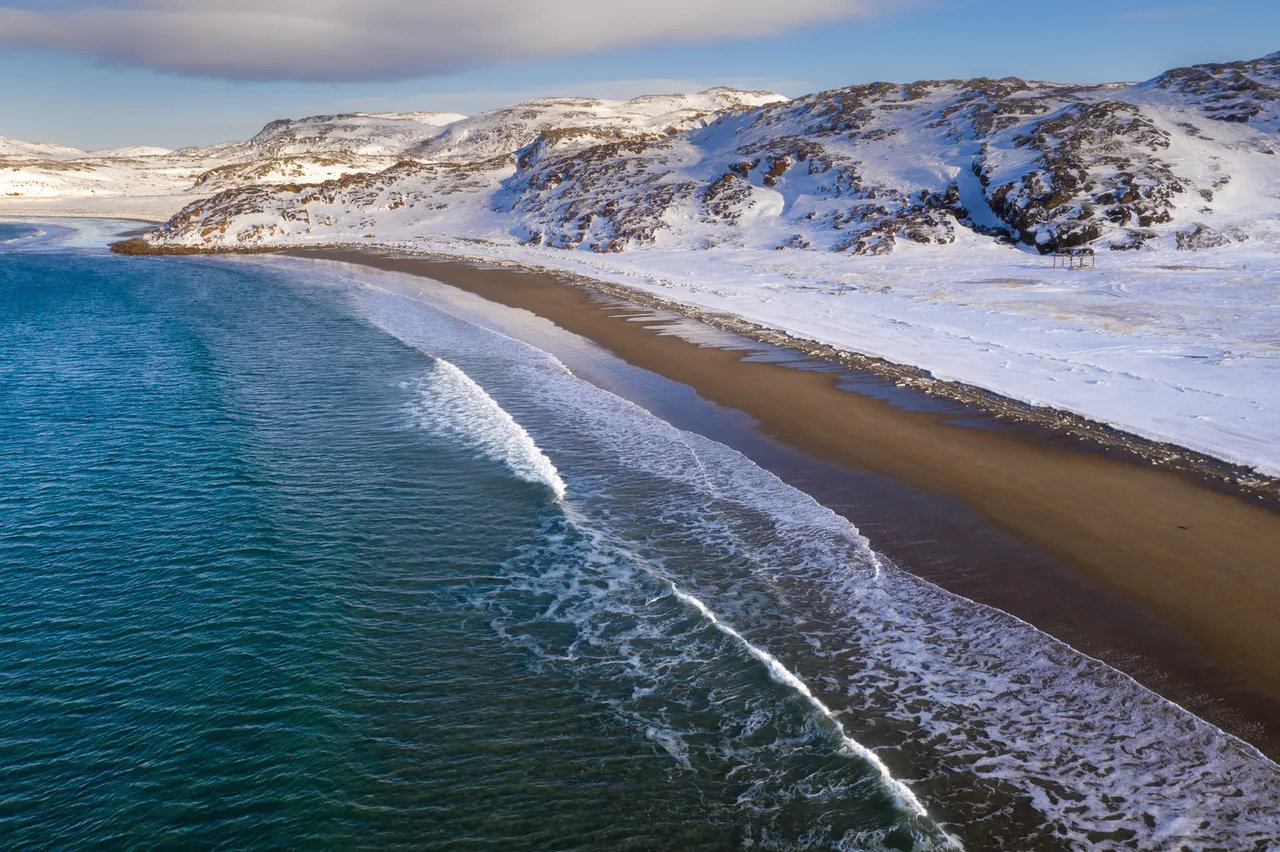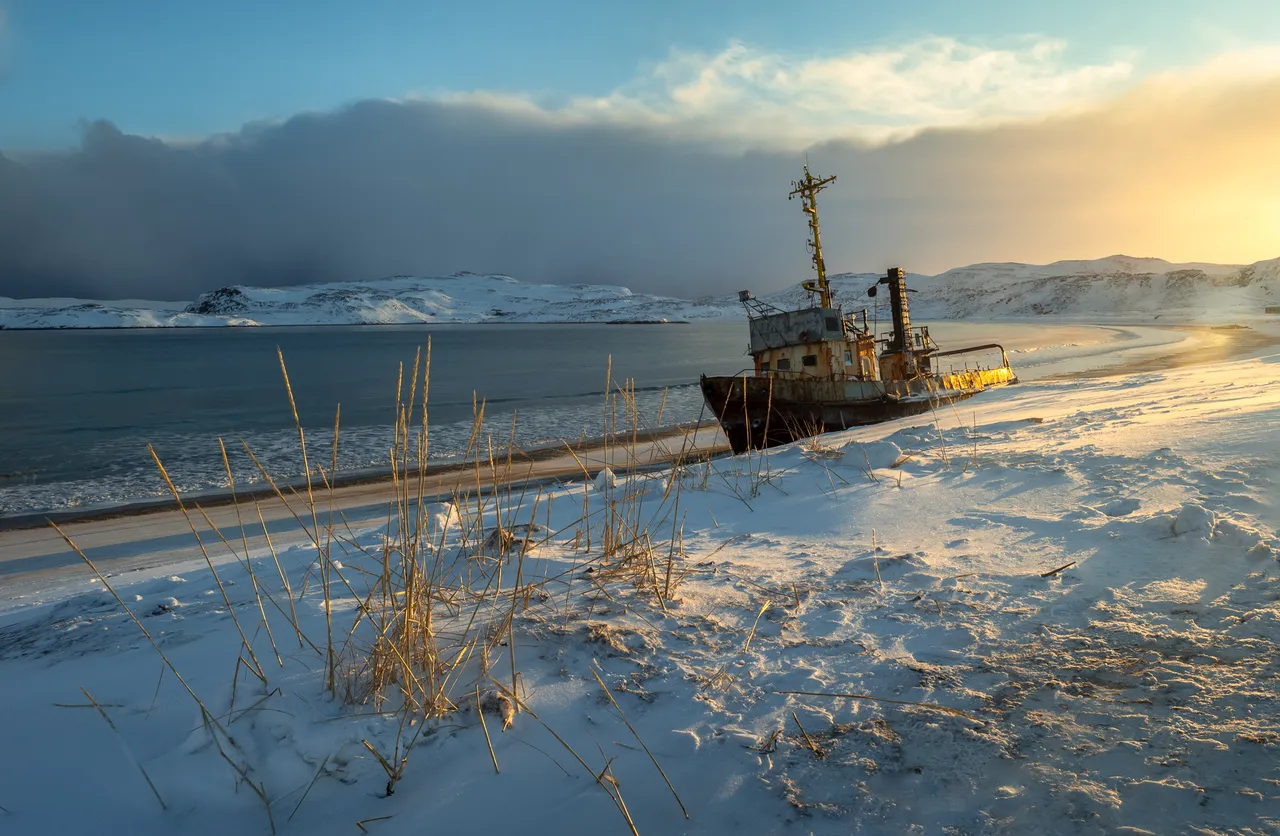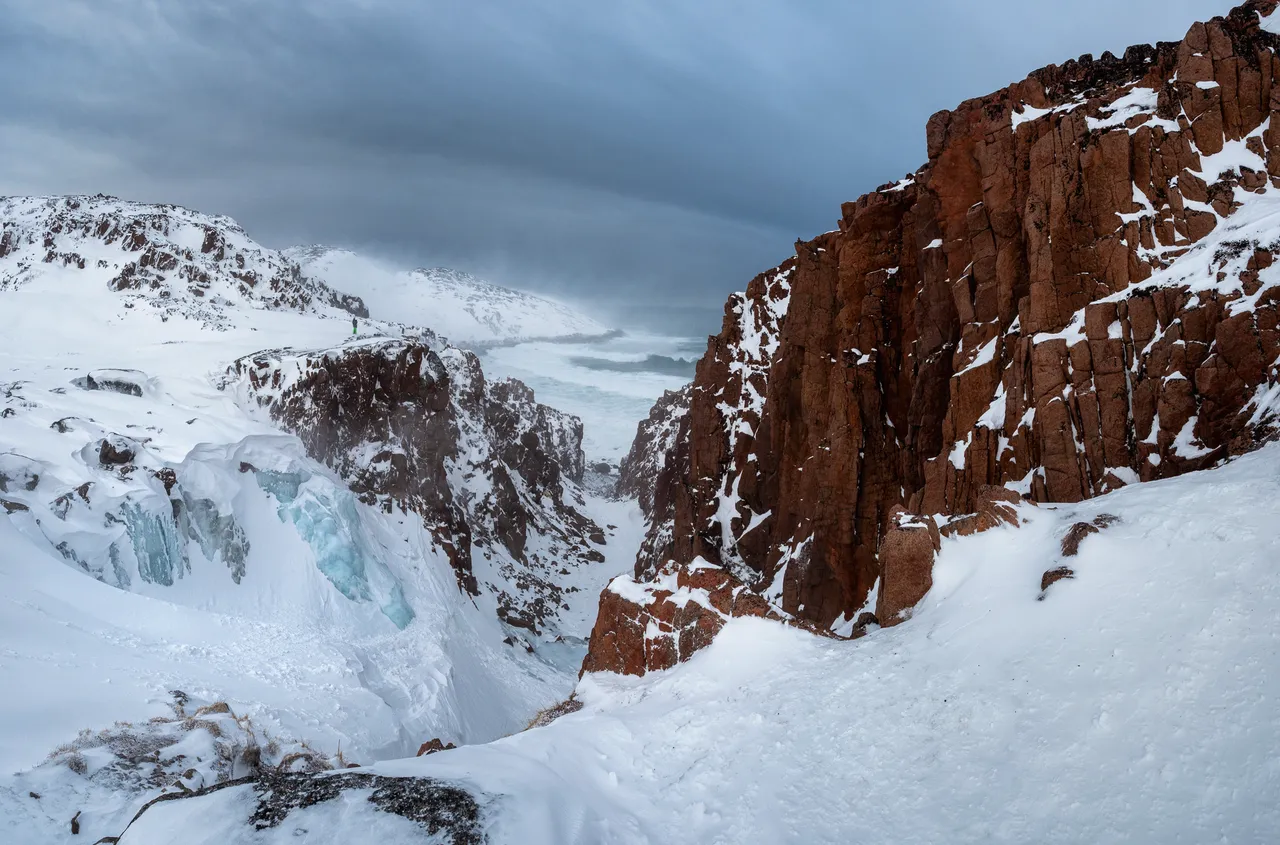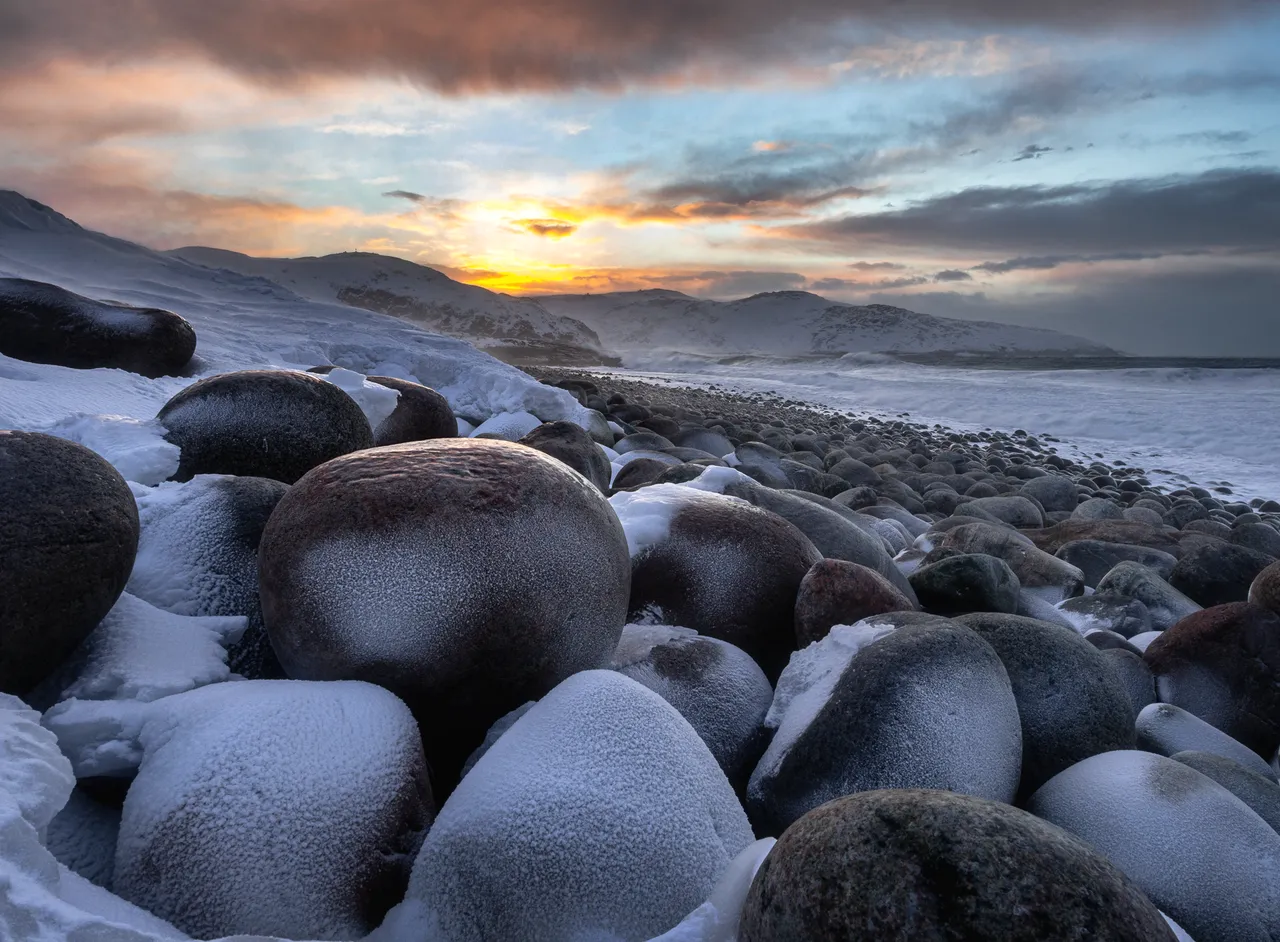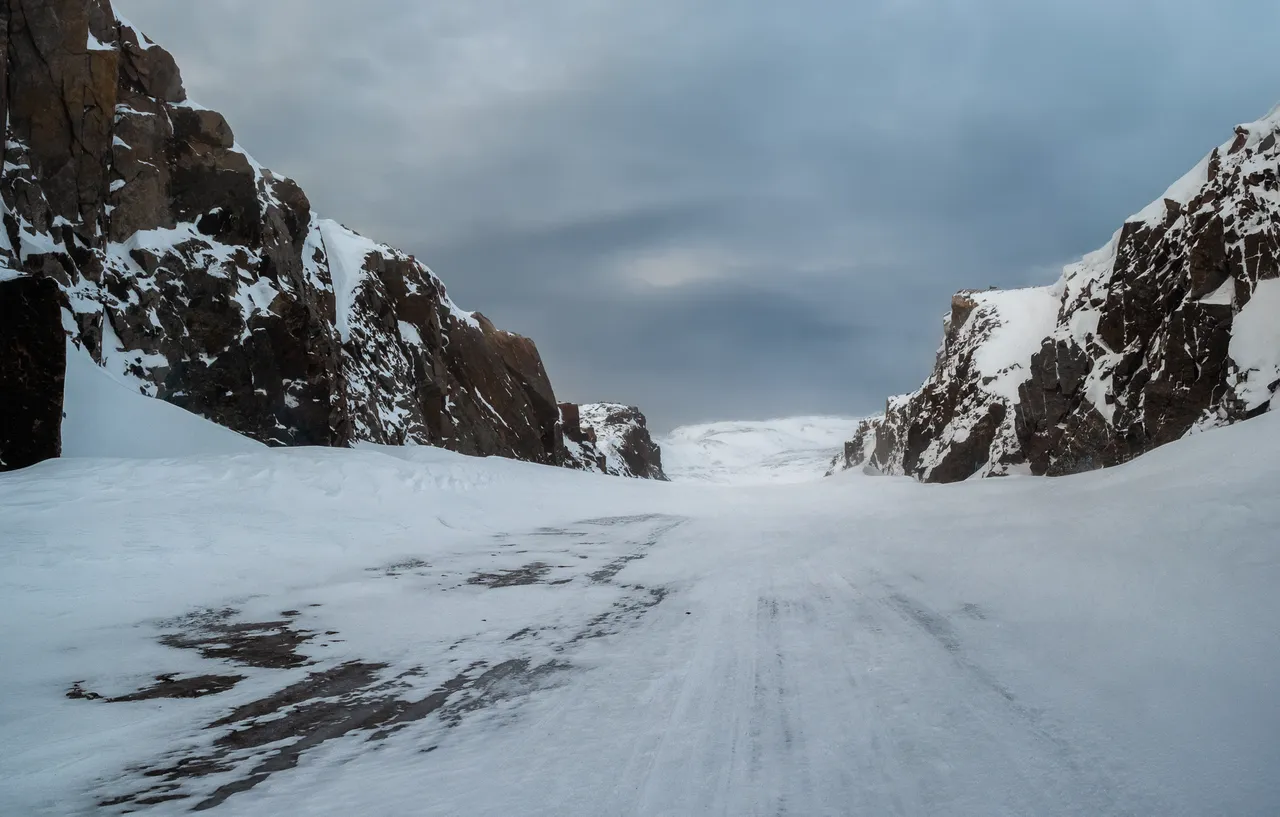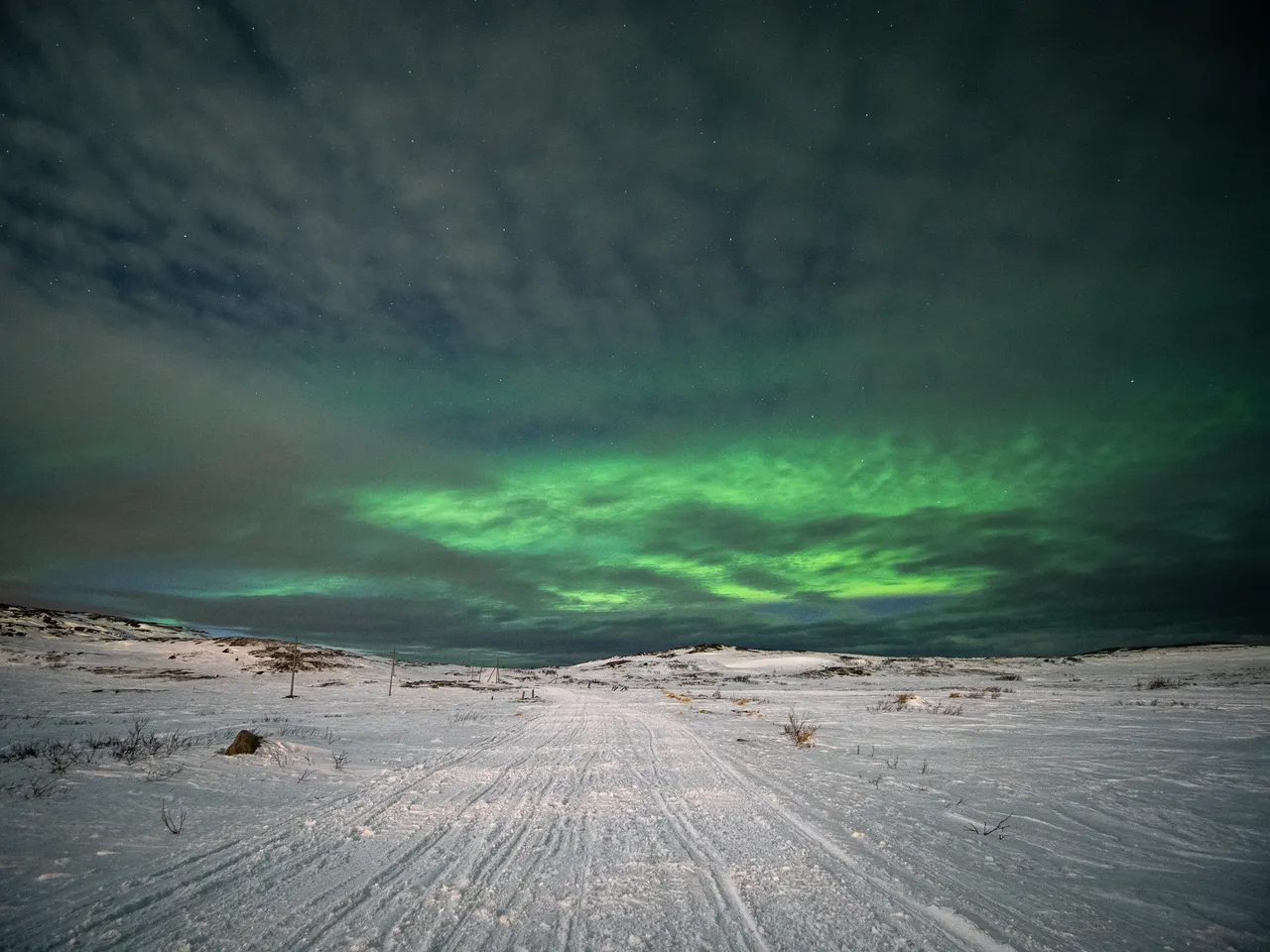We decided to spend the very first big winter car trip lasting about a month along the northern edges. We saw many interesting places and beautiful landscapes. I can write a lot about northern nature and show plenty of photos, these are endlessly beautiful places that bring me joy. But today I want to tell and show you one specific place on the coast of the Barents Sea — the village of Teriberka in the Murmansk region, Russia.
The village of Teriberka is located on the coast of the Kola Peninsula at the mouth of the Teriberka River, which flows into the Teriberka Bay of the Barents Sea. From the city of Murmansk, the capital of the region, to Teriberka is about 140 kilometers through a rather wild area. In winter, it is not always easy to get there: the only road may be covered with snow and then it is blocked and traffic is allowed only after the weather conditions improve, in a column following the snowplows.
Teriberka is located on both banks of the river, and in order to get from one part of the village to another, you have to walk or drive over a small bridge. Previously, these were two separate settlements, now united into one village of Teriberka: the original village of Teriberka itself, which now known as Old Teriberka, and the village of Lodeynoye, which began to be known as New Teriberka.
In the photo above, New Teriberka is located at the top, and Old Teriberka is at the bottom. At the same time, the new part of the village, the former Lodeynoye, is more lively and populated, people live here, a small fish factory operates, there is a school. In the old part, on the contrary, there are not so many people left, there is a large number of abandoned and dilapidated houses. But in both parts of the village, small hotels and guest houses have been built in recent years.
After a long period of quiet extinction of the village, 7-8 years ago Teriberka became famous after the film "Leviathan" directed by Andrei Zvyagintsev. Many scenes, especially natural landscapes, were filmed in Teriberka. People saw these places on the big screen, admired the atmosphere of abandonment and wildness, the primeval nature of the northern corner, and tourists came here.
Now you can find accommodation here, and not only an apartment in an old three-story building or a dilapidated house, but also a room in a nice hotel overlooking the sea or a small cottage with panoramic windows. You can eat deliciously in a couple of restaurants (however, at prices suitable not for a remote village, but quite capital ones), local seafood is especially good — scallops, sea urchins, fish. You can feed and cuddle with reindeer and huskies at the farm, visit a tasting of local delicacies: in addition to marine diversity, they offer delicious berries and herbs for tea.
But, of course, people come here not for food, but for impressions. For entertainment, there are long walks in the picturesque northern nature, including low mountains, snowmobile or ATV trips, sea trips in the hope of seeing whales that sometimes come into the bay. Lovers of abandoned buildings will find where to go in the old part of the village. Snowkiting, fishing, even diving — all this can be tried right here, although some organizational difficulties are possible: after all, Teriberka has become a tourist destination not so long ago.
And right at the mouth of the river, you can admire the local ship and boat graveyard, from which only "skeletons" remain over time. Basically, they lie quite shallow and in good weather they can be clearly seen through the water.
It is pleasant to walk along the long, almost endless sandy beaches on the side of Old Teriberka and look at the waves of the Barents Sea.
In the same place, on the beach, you can see another curious object — a fishing boat, thrown ashore by a winter storm at the beginning of 2020. I showed the view from above on it in the previous post. The owner found it unprofitable to dismantle and haul it away, and it blended surprisingly well into the landscape, adding even more atmosphere to the deserted northern beach. Many tourists climb it and take pictures of it.
The coast behind the new part of Teriberka is more steep, with rocks and small rocky beaches. There is a small waterfall here — Batarei Falls, which freezes in winter. It falls directly into the sea from a nearby small lake where many snowkiters catch the wind in winter.
Not far from the waterfall, there is the beach of Dinosaur Eggs. It was so named for the large oval boulders with which it is strewn.
Many rocks of different heights descend to the shore, on which it is pleasant to lie down in any weather, listening to the sound of the sea around. In winter they are especially photogenic :)
From the old part of the village to the east, almost along the coast, there is an unfinished and abandoned road, which as a result does not lead anywhere. It is noteworthy that at the exit from the village, its section was punched right in the rocks. On it you can get to Zavalishina Bay, separated from the coastal lake by a narrow spit with another wild beach. Or move away from the road: to the sea, to the tundra, to numerous small lakes.
In general, the main thing is not to spare time and your legs (or wheels, or skids) — to get out of the village to explore the surrounding area. Because all the most beautiful, of course, is located a little further from buildings. Wild nature, little changed by man — that is the value of these places.
Although these shores have not been completely deserted (the seasonal settlement of fishermen at this place is already mentioned in the 16th century), still very few people live here. The road connecting the village with the rest of civilization was built only in the mid-1980s, before that it was possible to get there only by sea or by helicopter.
And yes, another thing that draws people here. Teriberka is located beyond the Arctic Circle, and the Northern Lights can be seen there very often, from autumn to spring. It is especially good, of course, to come there for the Aurora in winter, during the polar night.
Last year we were not very lucky with the Northern Lights there: it was mostly cloudy, sometimes snow and a blizzard, and we saw the Aurora there mainly in this form as in these two photos. But it's okay, we saw it later.
I would love to come back there again in the fall. To see the autumn tundra, the sea, maybe the Northern Lights, if we are lucky, walk more. Maybe this year :)
It's better to watch the photo in high resolution.
Camera: OLYMPUS E-M1 Mark II, DJI Mavic 2 Pro
You can also see my photos in my blog LJ and in my profile on NatGeo. You can read a short interview with me here.

